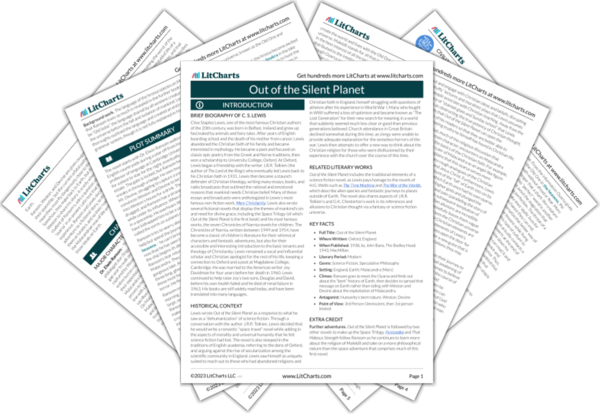AI ToolsNew
Tools to make learning and teaching easier
|
Previous
Chapter 22
|
Out of the Silent Planet: Postscript Summary & Analysis |
Next
Themes
|


Upgrade to unlock the analysis and theme tracking for all of Out of the Silent PlanetOut of the Silent Planet!
Get LitCharts A+